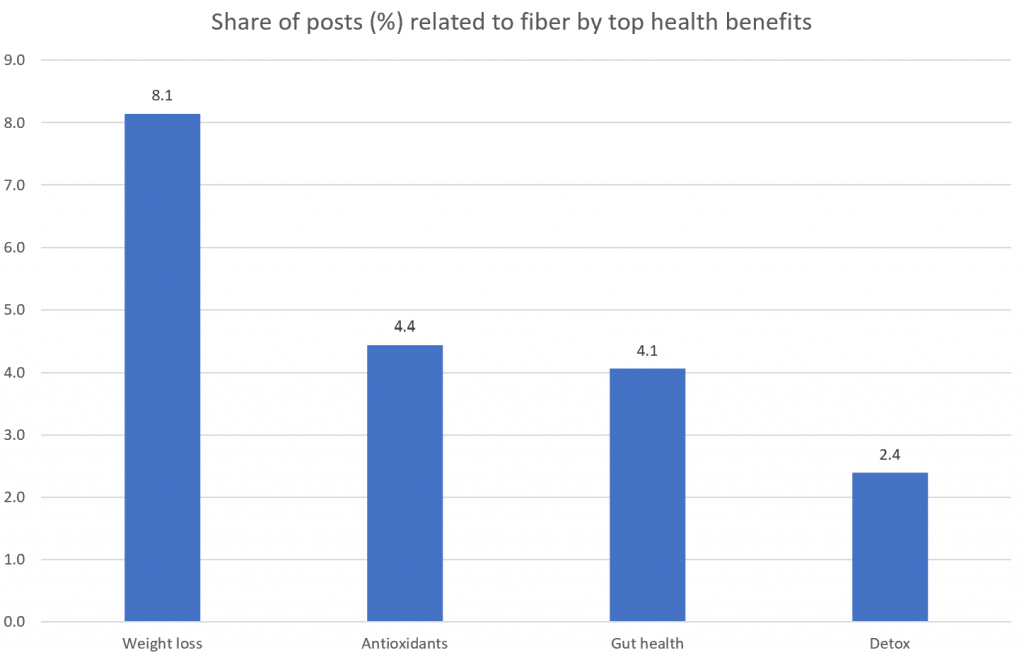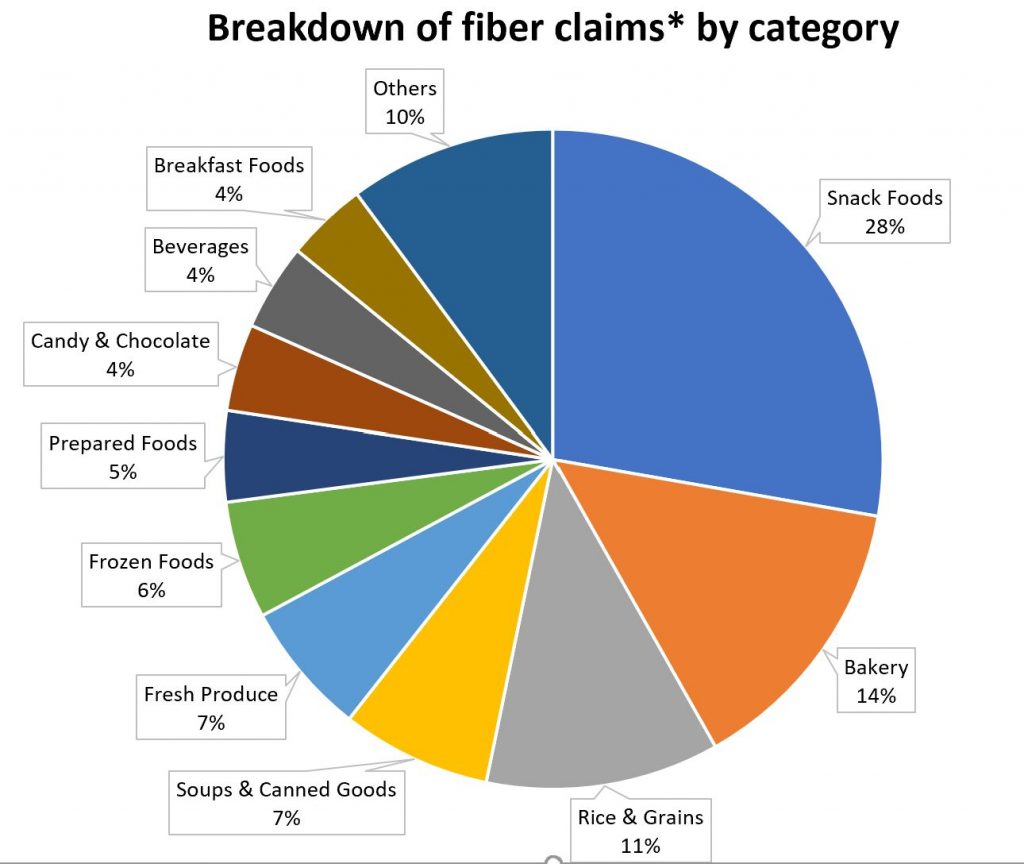
We don’t talk about gut-health trends every day. We also don’t talk enough about fiber. We don’t obsess over it the way we do over protein and carb macros. Sure, it keeps us regular and is recommended for weight loss, but yeah, protein! We should be having around 25-30 grams of fiber daily, but most people don’t reach that.
That may all be about to change, as new research is indicating that the potential health benefits of fiber are more far-reaching than previously thought.
Table of contents
Mini literature review
Fiber and kidney health
The link between processed food and a number of chronic diseases is accepted, but there is still very little understanding of exactly how such foods impact our health. A study from Monash University in Australia has found that diets rich in processed food could result in leaky gut syndrome and in turn increase the risk of kidney disease. Processed or heat-treated foods contain compounds called Advanced Glycation End Products (AGEPs), which improve the flavor and sensory properties of foods like baked goods, chocolate, potato chips, and others. AGEPs can trigger inflammation in the body, leading to chronic kidney disease.
However, by including a specialized prebiotic fiber called high amylose maize starch type 2, the inflammatory response could be suppressed, thereby managing gut and kidney health. This study was conducted on rats, but a clinical trial is planned for later this year.
Also Read: Functional Beverage Trends
Fiber Structure and Nutrition
Researchers from Quadram Institute and King’s College London have found how food processing can change the structure of dietary fiber and how this can impact the nutritional value of food. Researchers looked at how different cell wall structures of plants changed digestibility upon undergoing food processing. In processing techniques that reduced damage on cell walls decreased starch accessibility to digestion – simply put, it slowed down digestion to avoid large and sudden spikes in blood glucose levels.
This research can aid the development of new ingredients or processing techniques to retain the benefits of dietary fiber in processed foods.
Personalized Fiber
Another study from the University of Alberta on overweight or obese participants who were given high-dose arabinoxylan supplements (from corn fiber) found that while the fiber supplementation had a positive impact on the gut microbiome, the clinical responses differed by the individual. This opens up the possibility that personalized and targeted use of this prebiotic fiber along with certain probiotics could have a more significant impact on managing gut health and weight.
There are numerous other benefits of increased resistant starch or insoluble dietary fiber in our diets, including reducing glycemic response to foods, increasing insulin sensitivity, reducing the growth of harmful bacteria in the gut, and increasing production of short-chain fatty acids.
Must Read: Plant Based Food Market Research
Gut-health trends suggest a boost in demand for fiber
Aside from all the new research into the fiber, the nutrient is getting a boost in terms of interest in consumer media channels – articles and blogs written by consumers and influencers. References to dietary fiber in the last year alone saw the most growth among macronutrients, at 23%. Growth in interest in the other three ranged between 0.4% and 6%.
Interest in macronutrients based on consumer-related articles and blogs

This interest in fiber can be linked to growing interest in improving gut health among consumers. Our analysis found a high positive correlation (0.84) between gut health and fiber in consumer media. In addition, over 1 in 10 (14%) of these consumer-driven articles on fiber also talked about gut health. And consumer interest in gut health has nearly quadrupled in the last five years.
Consumer interest in gut health is driving interest in fiber

Social media sees the gut-health trends & fiber connection
In social media conversations about fiber, gut health was among the top health benefits talked about, pointing to greater awareness of the link between the two among consumers. In fact, conversations on fiber have been steadily growing, with a 2.5X increase between 2016 and 2020.
In the last year, it grew by 32%.

In terms of the nutrients talked about, the protein was the undisputed leader, but fiber came in second, even though conversations on protein were 4X more than those on fiber. What was particularly striking about consumers who spoke about fiber was that they appeared to have a greater interest in and understanding of nutrition as a whole. The share of conversations on lesser-known micronutrients – folate, manganese, and selenium for instance – was higher among this cohort compared to those focused on protein.
Stage set for fiber innovation
While fiber gains popularity within research and consumer circles, it is still pretty small in terms of product claims.
According to Spoonshot data, only 1.3% of product launches call out high fiber as a feature, with snack foods accounting for the highest share (primarily contributed by snack bars and biscuits/cookies). To be fair, even products with high-protein claims account for just 2.1% of launches, so there’s a long way to go.
Log in to our platform here to get more data & insights around products with high fiber in the snacks sub-category.

Source: Spoonshot
One of the challenges of increasing fiber content in certain processed foods is that it can impact the texture of the product, which could put consumers off. But new ingredients are emerging that could be incorporated into different categories without impacting these features too noticeably.
Alchemy FoodTech, for example, has launched a range of proprietary plant-based fiber blends that the company says can lower glycemic index and increase the fiber content of foods without affecting appearance, taste, or texture. Its primary product is said to be a blend of fibers from beans, corn, peas, rice, tapioca, and others.
Comet Bio is launching an arabinoxylan fiber product that can go into nutrition bars, baked goods, and drinks, also without impacting texture. This prebiotic fiber is naturally present in plants but isolating it was a challenge. The company says it has a new process that allows manufacturing at scale in a cost-effective manner. As an added bonus, Comet Biofiber is upcycled, with the source material as brewer’s spent grain, wheat straw, and other crop leftovers.
As a part of growing gut-health trends, high fiber claims are going to see a boom. We could witness this in the coming years as new technology allows us to harvest and process different types of fiber from a variety of sources and then tailor them for different (and even personalized) uses.



Leave a Reply